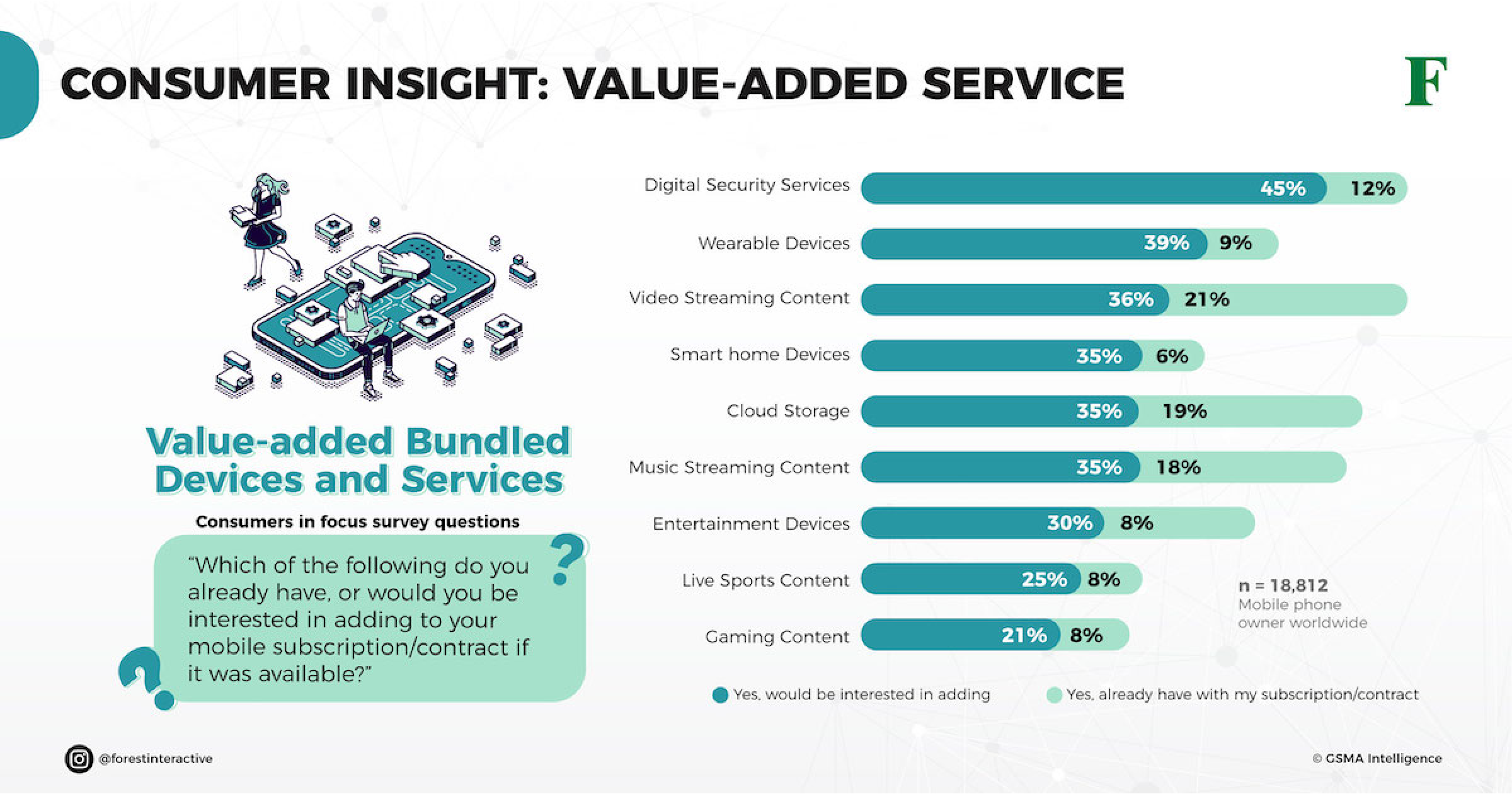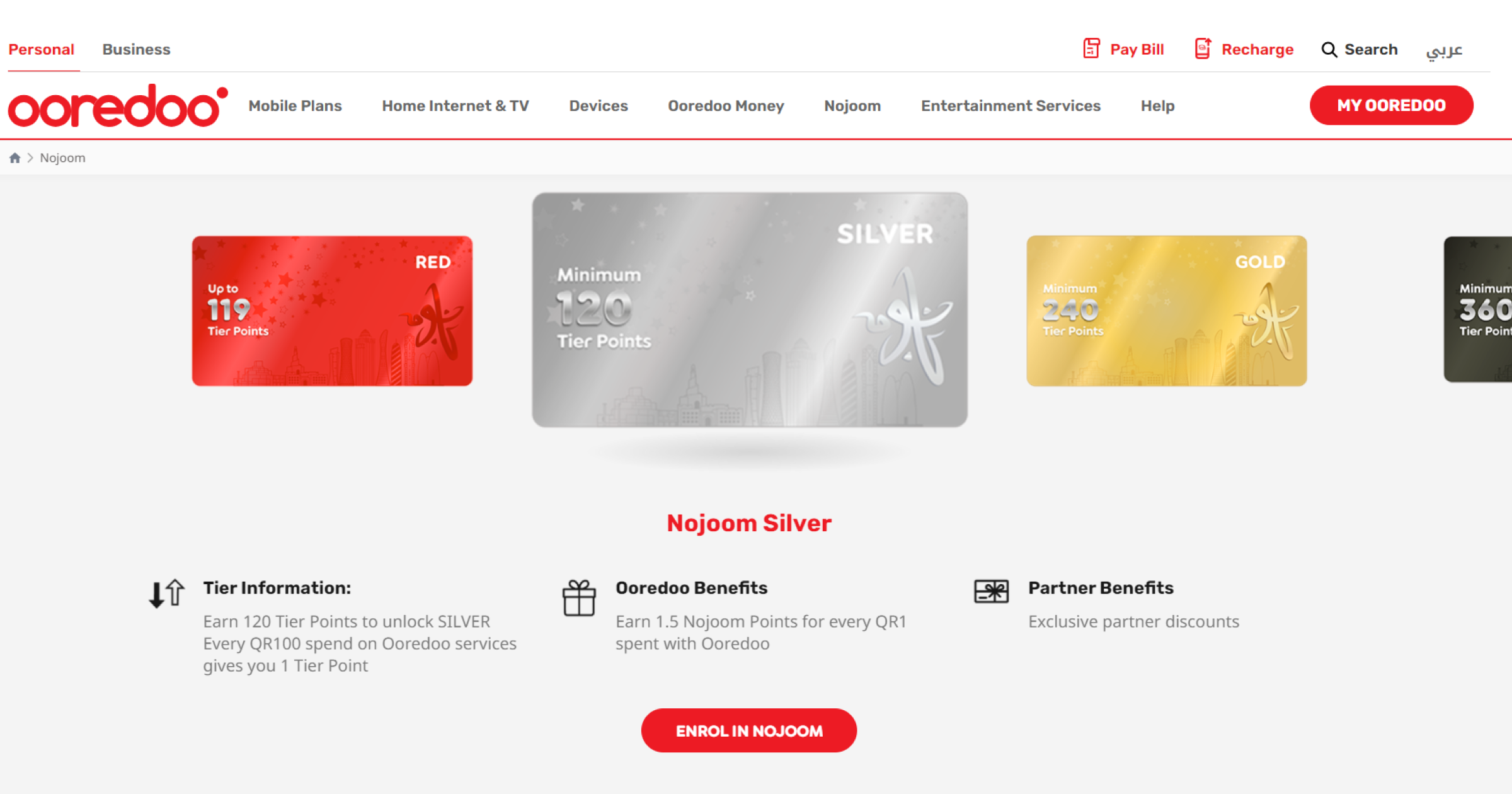Telecom businesses are in an ever-competitive environment since customer loyalty continues to be tested in the face of forever-changing customer needs and preferences. The customer base for telecom services is vast and diverse, making customer retention a key factor for success in this industry. With customer loyalty in the telecommunication industry being tested by increasing competition and the availability of price comparison sites, customer retention is critical for telecom businesses.
The customer acquisition costs associated with acquiring new customers are often higher than customer retention costs. Additionally, customer retention provides the opportunity to increase customer loyalty and satisfaction through customer service improvements and other strategies, such as loyalty programs or discounts for existing customers. By investing in customer retention strategies, telecom businesses can ensure that their customer base remains loyal and engaged.
In this article, we will explore the critical components that play a vital role in reducing customer churn and retention in telecoms.
Key Factors Impacting Customer Retention in the Telecom Industry

Several factors contribute to customer loyalty in the telecommunication industry. The world’s population of mobile phone users is ever-increasing, and so is the competition to acquire them. Enticing offers sway the telecom market to new customers, and on the other hand, existing customers for a brand might choose to leave the brand due to poor service quality. Here, we are exploring the various reasons why customers switch telecom operators:
Pricing Strategies and Value Perception
Telecom customers switch to a competitor for a better deal or lower price to save money. Telecommunications companies often offer various pricing plans, promotions, and discounts in a competitive market to attract and retain customers. Suppose a customer finds a better deal or lower price from a competitor. In that case, it may motivate them to switch to the new company, especially if they believe they will receive similar or better services at a lower cost.
Customers may also be swayed by factors such as better coverage, better customer service, or more features. Sometimes, customers may switch to a competitor due to dissatisfaction with their current provider, such as poor network coverage or customer service. Ultimately, customers switch to a competitor for a better deal or lower price when they believe the benefits outweigh the costs and inconvenience of changing providers.
Network Quality and Service Reliability
Some telecom services may have poor network coverage and experience frequent call drops for several reasons. The most common reasons include network infrastructure, interference, network congestion, geographical factors (such as tall buildings and trees), and technical problems (such as network malfunctions or software glitches).
Technological Innovation and Service Evolution
Telecom companies are often slow to adopt new services and technologies, such as 5G, the Internet of Things (IoT), and cloud-based services. This can result in customers feeling that their provider is not keeping up with the latest trends and innovations, and they may look elsewhere for more modern and innovative services.
Customer Service Excellence and Support
Customers may switch if they have had a negative experience with customer service, such as long wait times or unhelpful representatives. Many telecom companies struggle to provide a seamless and personalized customer experience, which can result in customer frustration and churn. Customers expect fast and easy-to-use digital expertise, and telecom companies are not always able to deliver this.
The impact of poor customer service on retention is significant. In the US, 39% of customers have admitted to leaving a telecoms company due to unsatisfactory customer service. This shows the importance of providing excellent customer support in retaining subscribers and maintaining a competitive edge in the telecom industry.
Competitive Offers and Service Packages
Customers may switch to a competitor if they are offered a better service, such as more data or international roaming, at a better price. Providing flexible pricing options that allow customers to pay only for their services can help retain them. This can include offering pay-as-you-go pricing models or allowing customers to mix and match different services to create a customized package that meets their specific needs.
Network Coverage and Accessibility
Providing a reliable and high-quality network is essential to retaining customers. This includes fast, consistent internet speeds, clear call quality, and strong network coverage. Customers may switch if they frequently experience dropped calls or poor network coverage in their area.
In fact, studies show that 45% of smartphone users churn because of problems with network quality. This stresses the need for telecom companies to continuously invest in and improve their network infrastructure to maintain customer satisfaction and loyalty.
Personalized Customer Experience
Customers may switch if they feel the company is not tailoring its services and offers to their needs and preferences. Offering a personalized and seamless customer experience is key to retaining customers. This can include providing easy-to-use self-service options, such as online portals and mobile apps, and offering friendly and knowledgeable customer support. Learn more about personalization here.
Data Security and Customer Trust
Telecom operators handle large amounts of sensitive data, making them vulnerable to data security risks. Customers may switch to a company that provides better data security if they feel their data is unsafe with the company. To address data security concerns, telecom operators must implement strong security measures, including regular security audits, encryption of sensitive data, employee training, and strict access controls. It is also important for telecom operators to comply with relevant regulations and standards, such as the General Data Protection Regulation (GDPR) and the Payment Card Industry Data Security Standard (PCI DSS), to ensure that they are properly protecting their customers’ data.
In 2019, AT&T faced a significant data security challenge when it confirmed that personal information and data from 73 million accounts had been leaked onto the dark web. Although the data was encrypted, a researcher discovered a critical vulnerability: only about 10,000 unique passcodes were used across all the accounts, corresponding to each permutation of the four digits 0000-9999. This meant that determining an account’s passcode could be achieved. In response to this security breach, AT&T triggered a mass reset of account passcodes to mitigate the risk.
The Future Of Customer Loyalty In Telecom

The telecommunications industry is on the verge of a revolution in customer loyalty strategies, driven by technological advancements and evolving consumer expectations. As we look to the future, several key trends are emerging that will shape how telecom companies engage with and retain their customers.
Emerging Technologies
The integration of cutting-edge technologies like 5G, artificial intelligence (AI), and the Internet of Things (IoT) is set to transform the telecom landscape. These technologies enhance the core services provided by telecom companies and open up new avenues for customer engagement and satisfaction. For instance, 5G’s ultra-fast speeds and low latency can enable new services like Augmented Reality (AR) experiences or advanced smart home solutions, providing unique value propositions to customers.
Personalization
As customer data becomes more accessible and analyzable, telecom companies are poised to offer increasingly personalized services. AI and machine learning algorithms can predict customer needs and preferences, allowing for proactive service offerings and tailored communication. This level of personalization can significantly improve customer experience in the telecom industry and foster stronger loyalty.
Value-Added Services

Customers are looking for more than just basic connectivity from their mobile subscriptions.
With 45% of respondents expressing interest, this is the most sought-after value-added service. As our lives become increasingly digital, the demand for robust security solutions is growing. Additionally, video (36% interested) and music (35% interested) streaming services are high on the list. This indicates a strong opportunity for telecom companies to partner with content providers or develop their streaming platforms.
By bundling these services with their core products, telecom companies can create more comprehensive and appealing packages that meet their customers’ evolving needs.
Why Do Telecom Businesses Resort To Cold Calling Their Customers?

Next, let’s examine why telecom operators resort to cold calling their customers, why it works for them, and why it’s frustrating. Besides the fact that cold calling is cost-effective for telecom companies, some other reasons why they do it are:
Lead Generation:
In the context of telecom businesses, cold calling can generate leads by reaching out to potential customers who may need a new telecommunications provider or may be interested in upgrading their service. Cold calling aims to engage potential customers in a conversation, provide information about the telecom business’s offerings, and identify those interested in further discussion or a follow-up call.
If done correctly, cold calling can be an effective way for telecom businesses to generate leads. It allows them to directly reach potential customers, answer any questions they may have, and ultimately convert them into paying customers. However, telecom businesses must ensure that their cold calling efforts comply with relevant laws and regulations to avoid legal issues or negative reputation impacts.
Direct Communication and Retention:
Telecom businesses can also use cold calling as a customer retention tool. By reaching out directly to their customers, telecom businesses can assess their satisfaction with their current services and address any issues or concerns they may have. This direct communication can help to build trust and establish a personal connection with customers, making them more likely to remain loyal to the company.
Cold calling can also be used to upsell additional services to existing customers, allowing the telecom business to increase revenue from its existing customer base. Additionally, cold calling can proactively address potential customer churn by identifying customers considering switching to a competitor and offering incentives or promotions to retain their business. By utilizing cold calling as a customer retention tool, telecom businesses can maintain open lines of communication with their customers, address any issues promptly, and ultimately strengthen their customer relationships and reduce customer churn.
However, many people see cold calling as an intrusive and unwelcome form of marketing, and they often do not want to receive these calls. Therefore, it’s important for telecom operators to have a clear and effective way to handle opt-out requests and comply with regulations such as do-not-call lists.
How To Reduce Churn In The Telecom Industry?
Customer churn is a significant challenge in the telecom industry, but it can be effectively managed and reduced with the right strategies. Here are some key approaches that telecom companies can adopt to minimize customer attrition:
Enhance Customer Service
The quality of customer service can make or break customer loyalty. To improve in this area, telecom companies should focus on ensuring easy accessibility to customer support. This means prominently displaying contact information and offering multiple channels for customers to reach out.
Harness the Power of Data Analytics
Utilizing data effectively is crucial in predicting and preventing churn. By analyzing customer behavior patterns, telecom companies can identify early warning signs of potential churn and take proactive measures. Identifying common pain points in the customer journey allows for targeted improvements in products, services, or processes.
Ensure Network Reliability
Maintaining a robust and reliable network is fundamental to customer satisfaction in the telecom industry. This involves consistent investment in infrastructure to minimize service interruptions and provide consistent coverage across service areas.
Regular upgrades to network capabilities are essential to meet increasing demands for speed and capacity. By prioritizing network reliability, telecom companies can significantly reduce one of the primary causes of customer dissatisfaction and churn.
Leverage New Technologies
Investing in cutting-edge technologies can significantly streamline customer interactions and improve overall satisfaction. Implementing co-browsing technology allows customer service representatives to see and interact with the customer’s screen in real-time, facilitating more efficient problem-solving.
AI-powered chatbots can provide instant responses to common queries, improving response times and freeing up human agents for more complex issues. Adopting omnichannel communication platforms ensures a seamless experience across various touchpoints, allowing customers to switch between channels without losing context.
Marketing Automation For Customer Retention In Telecom Industry: A step-by-step guide

Marketing automation uses software and technology to streamline, automate, and measure marketing tasks and workflows to improve efficiency and effectiveness. In the telecom industry, marketing automation can be used to perform targeted marketing, lead generation, customer retention, upselling and cross-selling, personalization, and campaign management.
In this section of the blog, we will explore the role of marketing automation in customer retention. By automating customer engagement and communication, companies can use marketing automation to improve customer retention and reduce churn.
Customer retention is extremely difficult in the telecom business because of the fickle nature of the market. Marketing automation can increase customer retention in the telecom business. By using marketing automation, marketers can keep track of their customers and target them with specific content that will keep them engaged. Additionally, by using automation for customer retention in the telecom business, businesses can focus on other areas, such as new customer acquisition.
Define Your Customer Retention Goals – What Do You Want To Achieve And By When
It is well-known that customer retention in the telecom business is very challenging, so it is paramount that telecom businesses clearly define their customer retention goals. This will help to set a benchmark against which to measure success and ensure that there is a focus on the support strategies that are most likely to deliver an increase in customer loyalty. Ideally, businesses should establish clear short- and long-term targets.
Objectives include increasing existing customer retention rates by an X percentage point over six months or maintaining current customer counts without a decrease over 12 months. With these goals clearly defined, marketing automation technology can then be used to develop strategies specifically tailored to meeting them, with scheduled campaigns sent at appropriate intervals.
Segment Your Customers – Who Are Your Most Valuable Customers, And What Do They Have In Common
Customer segmentation provides the telecom business with a valuable tool to determine its most valuable customers and what strategies to use to increase customer retention. By analyzing customer data, telecoms will learn what sets its most profitable users apart from other customers: how often they switch providers, how much they spend on services, and how often they opt in for additional products or upgrades.
Once these common characteristics have been identified, targeted campaigns can be implemented to better understand and provide value for those customers. With properly segmented marketing automation initiatives deployed across channels, it becomes easier for a telecom business to remain competitive and create loyal customer relationships far beyond initially acquiring them.
Unlock the power of your customer data with WebEngage’s Customer Data Platform
Create A Customer Retention Plan – What Activities Will You Carry Out To Retain Your Customers
Creating a customer retention plan is critical for success in the telecom industry. Companies can use marketing automation tools to increase customer retention, such as developing targeted campaigns addressing customers’ needs. These campaigns must be personalized for maximum impact and utilize various strategies, ranging from personal emails that offer discounts or benefits to loyalty programs that reward customers for continued engagement. Additionally, customer feedback should be collected and analyzed to gauge satisfaction levels and inform changes in strategy. A successful retention plan will ensure customers maintain loyalty to the brand, resulting in increased future revenue for the company.
A prime example of an effective customer retention strategy is Ooredoo’s Nojoom Loyalty program. This tiered program incentivizes customers to stay and engage more deeply with the brand by offering increasingly valuable rewards as they move up tiers.

The program’s strength lies in its flexible redemption options, including discounts at partner merchants, free movie tickets, and travel vouchers. This diverse range of rewards ensures customers find value tailored to their preferences, enhancing satisfaction and loyalty. The program’s success is evident in its remarkable results: a sevenfold increase in customer enrollment and redemption, along with an impressive 92% customer satisfaction rate.
Implement Marketing Automation Tools And Software – How Will These Help You Automate Your Customer Retention
Activities
Implementing marketing automation tools and software can help businesses in the telecom industry to increase customer retention. Automation technology enables businesses to create and deliver personalized messages, analyze user behavior, and target users with tailored content. This helps to strengthen customer relationships by creating effective communication strategies that foster loyalty. Additionally, automation can track user engagement over time to measure the effectiveness of campaigns, giving organizations insights into user trends and preferences. By leveraging automation tools and software to improve customer retention efforts, telecom businesses can ensure that their customers keep returning time after time.
Monitor And Measure Results – Track Your Progress And Make Adjustments To Ensure Success
Monitoring and measuring the results of marketing automation initiatives is essential for gaining insight into the success of your customer retention efforts. Once measures have been taken to apply marketing automation in the telecom business, tracking progress is critical – allowing you to modify and adjust strategies according to which methods are achieving a greater return. Optimizing campaigns should be done regularly when finding the best promotional strategies to maximize customer satisfaction while steadily increasing retention. By understanding which tactics are performing, adjustments can be swiftly made to assure higher levels of success.

Conclusion
In the telecom business, customer retention is key to success. By defining your goals, segmenting your customers, and creating a customer retention plan, you can ensure that you are retaining your most valuable customers. Marketing automation tools and software can help you automate customer retention activities, making monitoring and measuring results easier.
At WebEngage, we can help you boost your customer retention rates by implementing our powerful marketing automation platform. Book a demo today to learn more!
FAQs
How do you retain customers in telecom?
Retaining customers in the telecom industry involves a multi-faceted approach key strategies include:
- Offering personalized customer experiences with customized plans and tailored communication.
- Providing high-quality customer service with 24/7 support and efficient queue management.
- Implementing loyalty programs with exclusive benefits for long-term customers.
- Leveraging innovative technologies like Automation and AI-driven chatbots
What causes customer churn in the telecom industry?
Customer churn in the telecom industry is primarily driven by:
- Poor network quality
- Inefficient customer service
- Competitive offers from other providers
- Low barriers to switching between service providers
What is the trend in telecom in 2024?
Key trends in the telecom industry for 2024 include:
- Widespread adoption of AI, with 52% of companies using AI chatbots for customer service.
- Increased use of cloud computing for network management and scalability.
- Continued rollout and 5G technology expansion offer higher speeds and lower latency.
- Growth in edge computing to enhance user experience and reduce latency for applications like cloud gaming and VR.








 Harshita Lal
Harshita Lal
 Vanhishikha Bhargava
Vanhishikha Bhargava